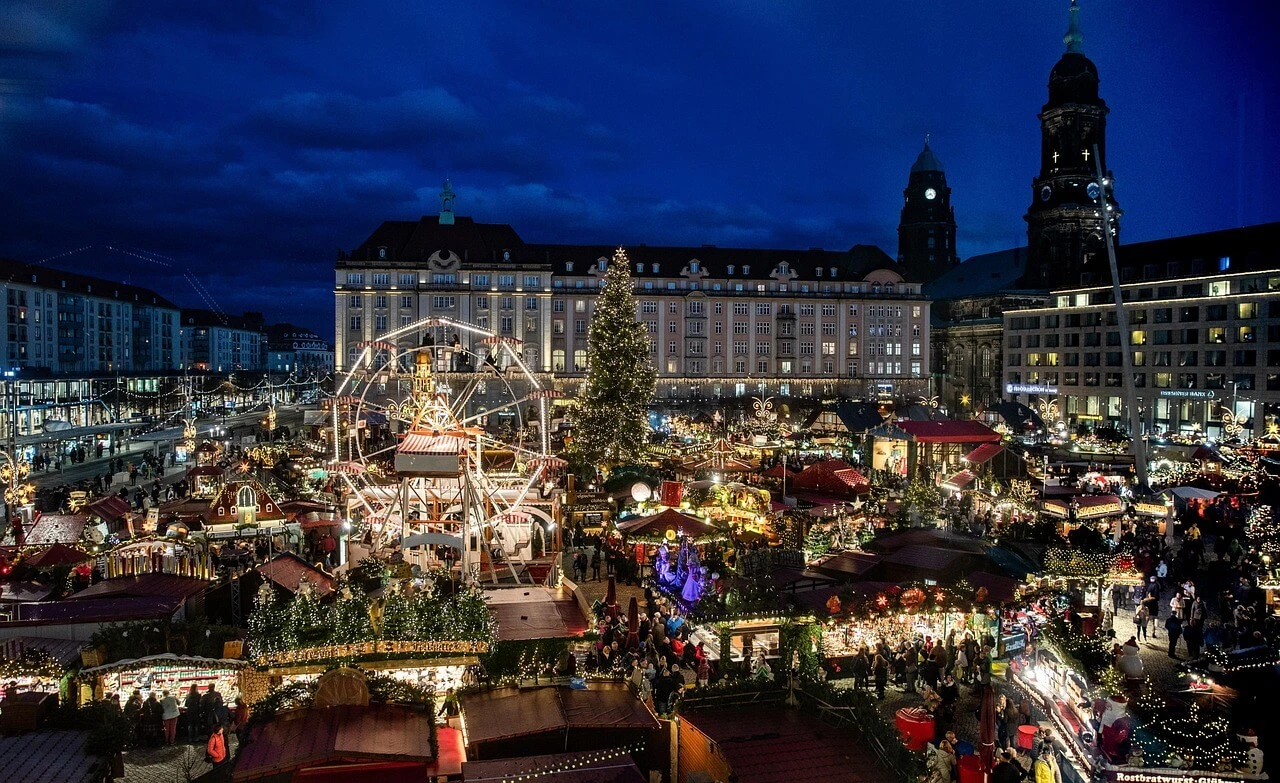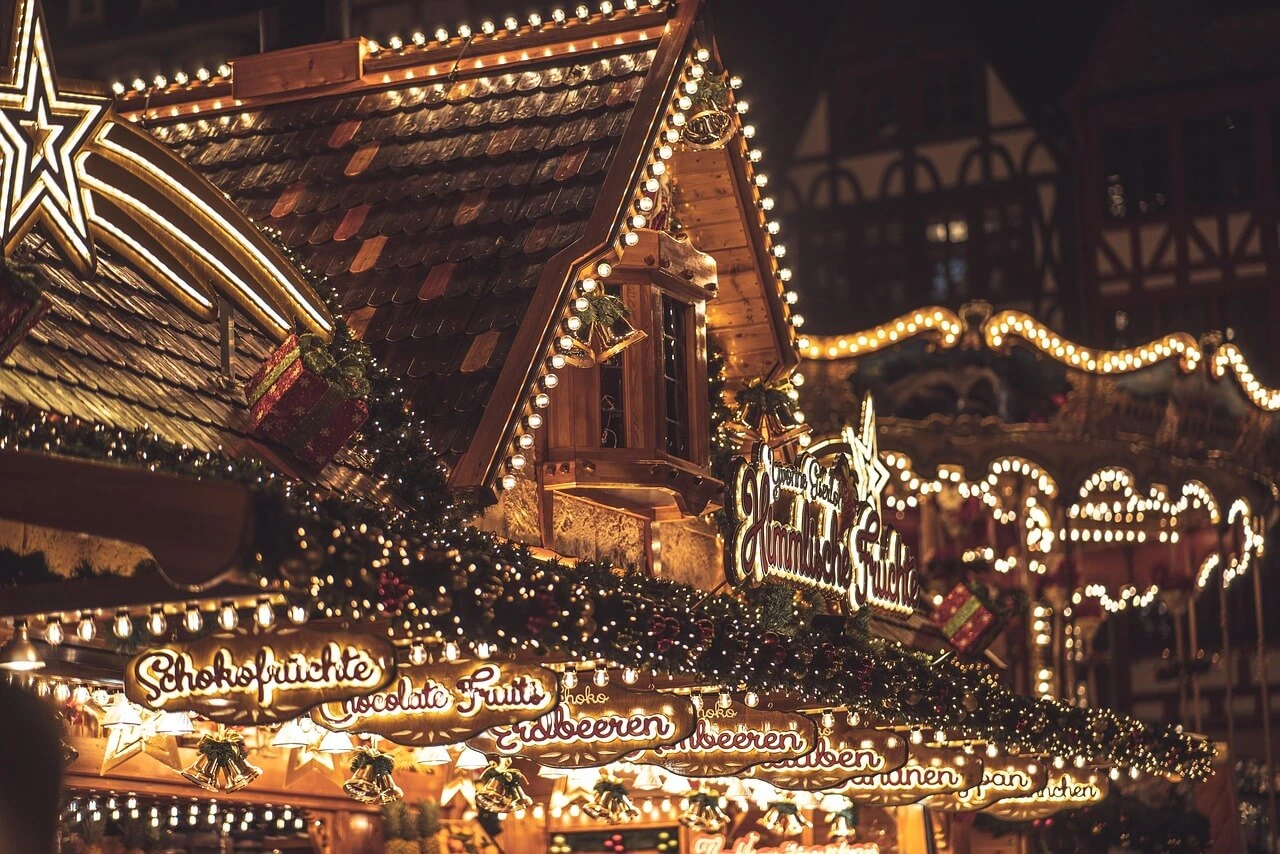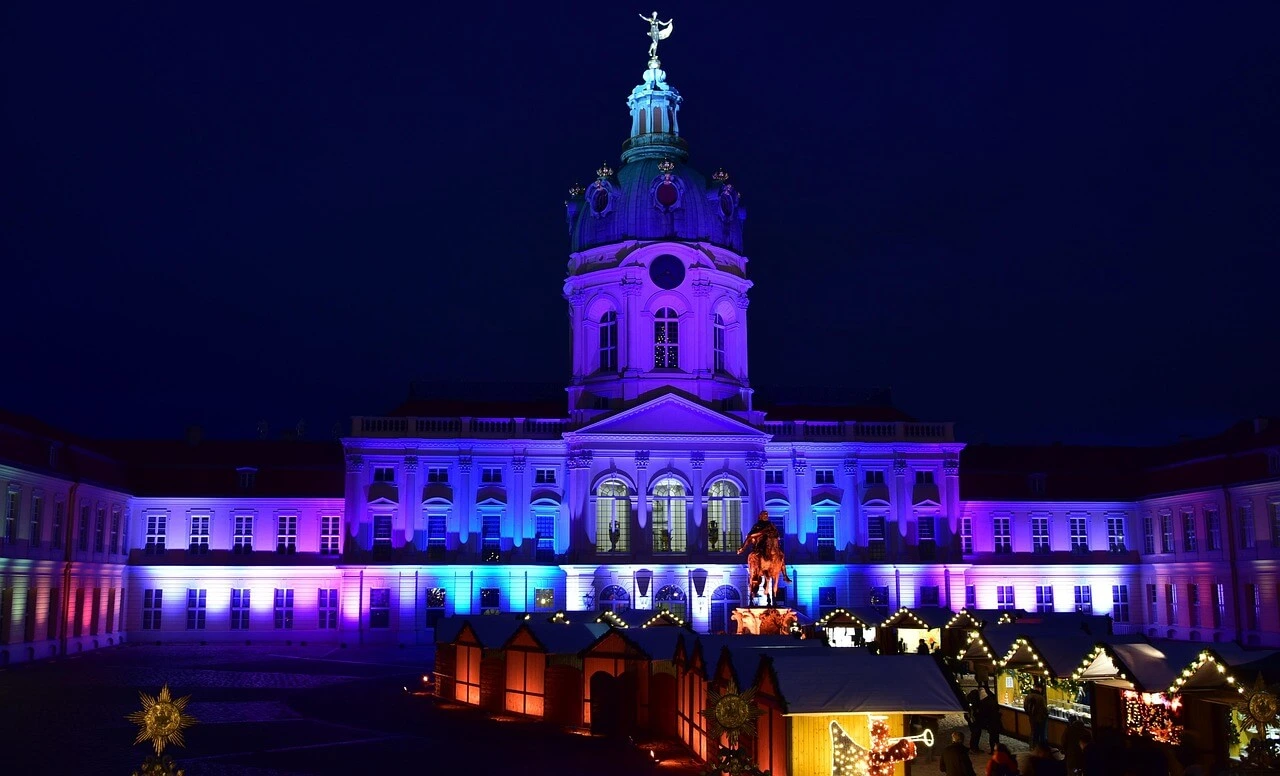The Ultimate 2025 Guide to Germany’s Most Magical Christmas Markets


If you’re a traveler dreaming of a festive winter getaway, Germany’s Christmas markets offer a magical experience you won’t forget. Known as Weihnachtsmarkt, these markets feature twinkling lights, wooden stalls, aromatic foods, handcrafted ornaments, and centuries-old traditions. This 2025 guide will show you the best markets to visit, how to plan your trip, what to expect, and practical tips for travelers.
Why German Christmas Markets Are So Special
German Christmas markets are more than just shopping spots - they are cultural experiences. Many markets have been around for hundreds of years, like Dresden’s Striezelmarkt, first recorded in 1434. Historically called Christkindlmarkt (“Christ Child Market”), these gatherings were originally for locals to buy winter goods, crafts, and festive foods.
Visiting a German Christmas market immerses you in a rich atmosphere: imagine historic town squares lit with fairy lights, the scent of roasted chestnuts and spiced wine, carolers singing, children riding small carousels, and friendly locals mingling with tourists. This unique ambiance is what makes Germany’s markets stand out to American travelers seeking authentic holiday experiences.
Top German Christmas Markets to Visit in 2025
Here’s a curated list of the most enchanting markets for your 2025 winter trip.
1. Nuremberg: Christkindlesmarkt
Why visit: Often called the quintessential German Christmas market, Nuremberg offers traditional stalls, historic buildings, and festive charm.
Timing: November 28 - December 24
Highlights:
- Traditional Nuremberg bratwurst in a roll
- Lebkuchen (gingerbread)
- Handmade ornaments
- A large Christmas tree and festive lighting
Tips: Arrive early or on a weekday to avoid crowds. Fly into Munich or Frankfurt and take a train to Nuremberg.
2. Dresden: Striezelmarkt
Why visit: One of the oldest markets in Germany,Dresden’s Striezelmarkt is steeped in history and located in a beautiful Baroque city center.
Timing: November 26 - December 24
Highlights:
- Nutcrackers and incense figurines from the Ore Mountains
- Giant Christmas tree
- Historic stalls offering local crafts and treats
Tips: Best visited in the late afternoon to capture photos of the illuminated square. Pair your visit with a nearby city like Berlin for a longer trip.

3. Cologne: Cathedral Market
Why visit: Cologne offers several markets, with the one in front of the iconic cathedral being the most famous.
Timing: November 17 - December 23, 2025
Highlights:
- Glühwein (spiced mulled wine)
- Gingerbread and sweet treats
- Stalls with handcrafted gifts
- Evening lights reflecting on the cathedral
Tips: Visit weekday mornings or early afternoons for a less crowded experience. Explore smaller themed markets in the city for a relaxed vibe.
4. Erfurt: Cozy and Quaint
Why visit: For a more intimate, traditional experience away from large crowds, Erfurt’s market is ideal.
Timing: November 25 – December 22, 2025
Highlights:
- Medieval town square setting
- Local crafts and wooden ornaments
- Warm seasonal food and drink
Tips: Perfect for combining with other cities on a 7–10 day itinerary.

5. Berlin: Schloss Charlottenburg Christmas Market
Why visit: Berlin has several Christmas markets, but the Charlottenburg Christmas market stands out for its romantic, fairy-tale-like setting. The palace grounds, adorned with lights and decorations, create a magical atmosphere perfect for holiday strolls and family visits.
Timing: Late November through December 24 (typical Berlin market dates).
Highlights:
- Elegant wooden stalls selling handcrafted gifts, ornaments, and festive decorations
- Gourmet food and drink: traditional Glühwein, roasted nuts, sausages, and international treats
- Entertainment for all ages: carousels, ice skating, live music, and sometimes even theatrical performances
- Beautiful palace backdrop illuminated at night, perfect for photos

6. Hidden Gems & Smaller Towns
If you prefer quieter towns, consider markets in places like Gengenbach, Rothenburg ob der Tauber, or Esslingen. They offer authentic charm, fewer tourists, and picturesque backdrops perfect for photos and holiday shopping.
Planning Your Trip: Dates, Weather, and Transportation
When to Go
Most German Christmas markets open in late November and run until December 22-24. Some smaller towns or those in touristy areas may stay open longer.
Weather & Packing Tips
December in Germany is cold: daytime highs around 35–45 °F (2–7 °C) and nighttime lows in the 20s–30s °F (‑6 to 0 °C). Snow is possible, and daylight is limited. Pack:
Budget & Currency
Germany uses the euro (€). Typical costs:
- Glühwein: €5–8 (~US$5–9)
- Souvenirs: €10–40 (~US$11–45)
Carry some cash as many stalls prefer it, though cards are fine for hotels and larger shops.
Getting Around
- Fly into Frankfurt, Munich, or Cologne/Bonn
- Use trains to travel between cities (ICE and regional trains are reliable)
- Book accommodations early to ensure central locations near the markets
Staying Connected
For navigation, translation, and photography, use a Germany eSIM. This ensures seamless connectivity for checking schedules, maps, and sharing your experience online.
Maaltalknow’s travel tools can help plan routes, compare markets, and manage bookings.

What to Expect at the German Christmas Markets
Food & Drink
- Glühwein: Warm spiced wine in a commemorative mug
- Bratwurst: Grilled sausages in rolls
- Lebkuchen: Traditional German gingerbread
- Roasted nuts and sweets: Almonds, chestnuts, marzipan, stollen
Crafts & Gifts
- Hand-blown glass ornaments
- Wooden nutcrackers and incense smokers
- Candles, textiles, and Christmas pyramids
Tips: Weekdays are less crowded. Enjoy the market atmosphere rather than focusing on bargains.
Suggested Itineraries
Short Trip (4–5 Days)
- Day 1: Arrive in Frankfurt
- Day 2: Travel to Nuremberg, explore the Christkindlesmarkt
- Day 3: Optional: Morning in Nuremberg, then train to Munich for markets
- Day 4: Explore Munich Christmas markets
- Day 5: Depart (or extend to Berlin if possible)
Longer Trip (7–10 Days)
- Day 1–2: Fly into Frankfurt, explore the city and nearby sights
- Day 3–4: Train to Nuremberg (2 nights) for the Christkindlesmarkt
- Day 5–6: Train to Dresden (2 nights) for Striezelmarkt
- Day 7–8: Train to Cologne (2 nights) for the Cathedral market
- Day 9: Train to Berlin (1–2 nights) for Schloss Charlottenburg Christmas Market and other Berlin markets
- Day 10: Return via Frankfurt
What to Pack & Practical Tips for Travelers
Packing List
- Thermal base layers + fleece mid‑layer + waterproof/windproof outer jacket.
- Warm hat, scarf, gloves (ideally waterproof).
- Comfortable boots with good tread (cobbles and winter conditions).
- Warm socks (wool or fleece‑lined).
- Daypack or tote (for souvenirs, market finds).
- Power adapter for Germany (Type C/F plugs) and perhaps a portable charger (you’ll use your phone for photos, maps, eSIM data).
- Sunglasses (the low winter sun can glare) and lip balm (cold dry air).
- Small umbrella or packable rain jacket (just in case).
Money & Payment
- Carry some euros in cash as many stalls prefer cash.
- Credit/debit cards used mostly for lodging/large purchases, not always at individual market huts.
- Know your USD→EUR approximate conversion when budgeting.
- Tipping: For sit‑down meals, small tip (5‑10 %) is acceptable; for stand‑up food stalls, rounding up is fine.
Cultural & Safety Tips
- Greeting: “Frohe Weihnachten” means “Merry Christmas” in German - nice to know.
- Markets often run late into the evening; be aware of transport back to your accommodation (especially after 9‑10 p.m.).
- Safety: Germany is generally very safe for tourists. Use common sense: keep an eye on belongings, especially in crowded evenings.
- Respect local customs: Many stalls close by Christmas Eve; markets may wrap up around December 23rd in many places.
- Use your smartphone (with active data via eSIM) to check train schedules, market closures, weather updates, and keep connected.

Why Book Early & Choose Your Dates
If you’re thinking of a Germany Christmas market trip for 2025, here are some reasons why booking as soon as possible is recommended:
- Popular markets fill up quickly. Accommodation and trains get booked early in the festive season.
- Some markets already publish dates for 2025 (see above) so you can align your visit precisely.
- Weather in December can be unpredictable (snow, sub‑zero temps in places). Having your flights/hotel secured gives you flexibility to adapt.
- From the U.S., you’ll want to factor in time-zone adjustment (Germany is +6 hours ahead of Eastern Standard Time in winter) and plan accordingly.
- It’s a bucket‑list experience: imagine arriving in Germany just as the Christmas lights go on, strolling through centuries‑old streets, with a mug of warm Glühwein in hand… That magic doesn’t wait.
Germany’s Christmas markets are more than just holiday fairs - they are immersive cultural experiences, steeped in history, rich with festive atmosphere, and perfect for American travellers seeking something unforgettable this winter. Whether you opt for the iconic grandeur of Nuremberg, the historic charm of Dresden, the iconic cityscape of Cologne, or a quieter town like Erfurt, you’ll walk away with memories (and perhaps some gorgeous handcrafted ornaments) that linger long after your return home.
As you plan your trip, remember to check market dates for 2025, book flights/accommodation early, pack smartly for winter weather, bring your sense of adventure (and your eSIM‑equipped phone for seamless connectivity), and use our Maaltalk Europe eSIM and MaaltalkNow AI travel app to guide your journey.
Here’s to crisp evening air, warm spiced wine, wooden‑hut charm, and a German Christmas market that lights up your winter in a way only Germany can.

FAQ about German Christmas Markets
When do Christmas markets in Germany open in 2025?
Most markets begin in late November (often around November 20–28) and run until December 22–24. Some smaller markets or regional exceptions may stay open slightly later.
Which German Christmas markets are best for first‑time visitors from the U.S.?
Great starting points include Nuremberg (classic look & feel), Dresden (historic tradition), and Cologne (city convenience + iconic landmark). These markets offer accessibility, strong festive ambiance, and lots to see.
What should you pack for a Germany Christmas market trip?
Warm layers (thermal base, fleece, waterproof outer), hat/scarf/gloves, sturdy boots, power adapter (Germany uses Type C/F), and cash euros for market stalls. Also, if you plan to use your phone for photos/maps, a portable charger and eSIM are smart.
How much does it cost to visit German Christmas markets?
Entry to many markets is free. Food/drink items (like a mug of Glühwein) might cost roughly €5‑8 (~US$5‑9 depending on currency). Souvenirs vary - handcrafted ornaments may run €10‑40 (~US$11‑45) or more. Budget accordingly.
Are German Christmas markets safe to visit for travelers?
Yes, Germany is generally very safe for tourists. Like any winter travel and crowded event, you should use usual travel precautions: watch your belongings, be cautious in large crowds, check transport schedules in advance, and stay weather aware (in case of snow/ice).
How can I stay connected in Germany while visiting the markets?
Many travellers from the U.S. opt for an international eSIM or travel‑data plan, so they have mobile data, GPS/maps, translation apps, and can share photos without relying on spotty WiFi. Using a Germany eSIM is especially useful for moving between markets, checking train times, and staying in touch back home.
Can I combine visiting multiple markets on one trip?
Absolutely. Germany’s efficient train network makes it feasible. For instance: fly into Frankfurt, visit Nuremberg, then train to Dresden, then to Cologne or another city. Just ensure you check each market’s dates (and train/transport schedules) and book accommodation in advance.



